#environmentallyfriendly
Text

Here’s my personal recommendation of a YouTube video to check out:
youtube
#solarpunk#plants#plantcore#nature#naturecore#environmentalism#environmental#environmental activism#environmentallyfriendly#environmental justice#cool plants#amazing plants#interesting#intriguing#leftist#leftism#leftisim#left wing#left wing politics#leftist politics#environmental science#video essay#a better future#tumblr recommendations#recommend#recommendation#youtube#youtube content#youtube recommendations#youtube video
197 notes
·
View notes
Text
Sustainable Development in Singapore: An Exemplar of Modern Urban Ecology

Strategic Advancement in Green Building: In an ambitious endeavor, Singapore aims for 80% of its buildings to be green-certified by 2030, a significant milestone considering its urban density. Changi Airport, an epitome of this initiative, integrates a myriad of eco-friendly features, including the Rain Vortex, the world's tallest indoor waterfall, enhancing its reputation as the "World's Best Airport" for eight consecutive years.

Solar Energy Initiatives: Singapore's commitment to renewable energy is evident in its solar power achievements. Surpassing 820 megawatt-peak (MWp) in solar capacity at the end of 2022, the nation is on track to reach its 2025 target of 1.5 gigawatt- (GWp).

Enhancements in Public Transportation: Singapore's sustainable transport strategy aims for 75% of peak-hour commutes to be via public transport by 2030. The expansion of the Mass Rapid Transit (MRT) system and the introduction of eco-friendly buses are pivotal in this endeavor, aiming to reduce reliance on private vehicles and lower carbon emissions.
Promotion of Electric Vehicles (EV): The government's extension of the Electric Vehicle Common Charger Grant until December 2025 underscores its commitment to enhancing EV infrastructure. This initiative, covering up to 50% of the cost of smart chargers, has led to the approval of 267 EV charger applications across 107 condominiums since July 2021.
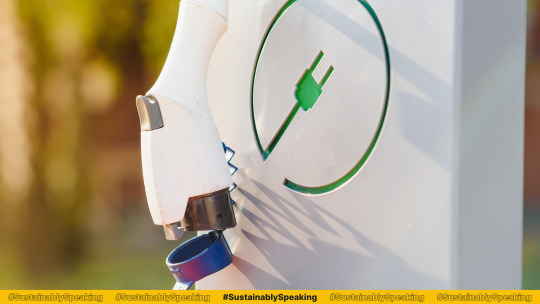
Vision of a "City in a Garden": Singapore's approach to urban development harmoniously blends with environmental stewardship, as seen in its goal to plant one million trees by 2030. The iconic Gardens by the Bay, with its Supertrees, symbolizes this blend of ecological innovation and urban living, integrating features like solar energy collection and rainwater harvesting.
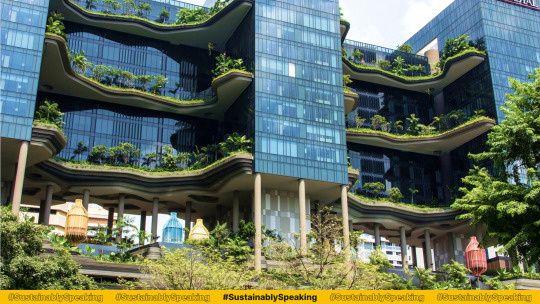
Singapore's multifaceted approach to sustainability is a testament to its visionary leadership, integrating technology, policy, and community involvement to create a living model of a sustainable urban future.
#sustainability#urban ecology#Singapore#renewableenergy#public transport system#electricvehicles#environmentallyfriendly#green building#ev#urban development#green policy#urban greenery#electric cars
8 notes
·
View notes
Text
Simple Ways To Embrace Sustainable Living in Your Daily Life

Are you tired of feeling like your day-to-day routine is contributing to the destruction of our world? Do you wish to make a difference but don't understand where to begin? Well, look no further because we have actually got you covered!
With our article "Simple Ways To Embrace Sustainable Living in Your Daily Life", we aim to provide you with practical and simple actions to include sustainable living practices into your everyday regimen. From reducing plastic waste to conserving energy, small modifications can make a big distinction in creating a more eco-friendly lifestyle.
In this article, we'll talk about tips and techniques that are both great for the environment and beneficial for your health and wallet. Whether you're a university student, a working specialist, or a stay-at-home mom or dad, our detailed guide will assist you take those crucial very first actions towards a sustainable lifestyle.
Table Of Contents
1. Understanding Sustainable Living
2. Decreasing Carbon Footprint
3. Public Transport and Sustainable Commute
4. Single-Use Plastic Alternatives
5. Food Choices and Sustainable Consuming
6. Mindful Consumption and Ethical Fashion
7. Waste Management and Recycling
8. Conclusion
youtube
Understanding Sustainable Living

Sustainable living is a conscious option to live in a more environment-friendly way that lowers greenhouse gas emissions and decreases our negative environmental impact on the planet. It means choosing to be more conscious of the natural deposits we utilize and discovering methods to both decrease and recycle products in our daily lives. Here are some practical and simple ways you can start accepting green living in your everyday life:
1. Start with the essentials
Begin by making little modifications to your day-to-day routine that can have a big impact in the long run. This consists of shutting off devices and lights when not in use, taking shorter showers, and utilizing environmentally friendly cleansing items. These simple steps can help in reducing your carbon footprint and save energy and resources.
2. Buy reusable products
Single-use products like plastic bags, straws, and water bottles have a substantial unfavorable effect on the environment. By investing in reusable items, such as cloth bags, metal straws, and reusable water bottles, you can substantially minimize the amount of waste you produce and help secure the world.
3. Select sustainable transport choices
Automobiles are a significant factor to greenhouse gas emissions. By picking sustainable transportation choices like public transport, biking, or strolling, you can reduce your carbon footprint and add to a healthier planet.
4. Bear in mind your food choices
The food industry has a substantial impact on the environment. By picking natural and locally produced foods, decreasing meat usage, and preventing food waste, you can lower your environmental effect and promote sustainable living.
5. Choose sustainable style
The fashion business is a significant contributor to greenhouse gas emissions, pollution, and waste. By selecting ethical and sustainable style choices, you can help lower the negative impact of the industry on the environment.
6. Practice conscious consumption
Prior to making a purchase, ask yourself if you truly need it and if it aligns with your values of sustainable living. Consider choosing items made from sustainable materials and choose for product packaging that can be recycled.
7. Manage your waste
Proper waste management and recycling is key to minimizing our negative influence on the planet. Arrange your waste into recyclable and non-recyclable materials, and ensure to get rid of them properly. Consider composting natural waste to produce nutrient-rich soil for your garden.
Decreasing Carbon Footprint
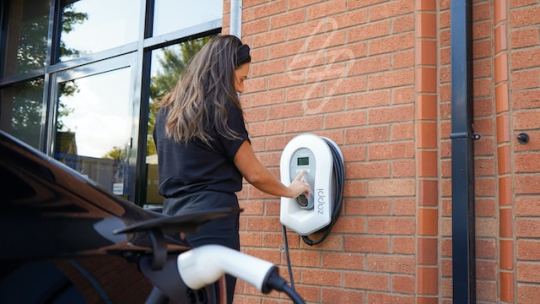
Minimizing your carbon footprint is among the most efficient ways to accept sustainable living. Here are some basic actions you can take:
1. Reduce energy intake: Decreasing your energy usage is a great way to decrease your carbon footprint. Consider turning off lights and appliances when not in use, using energy-efficient light bulbs, and disconnecting electronics when they are not being used. This can make a huge difference in reducing energy use, which in turn lowers greenhouse gas emissions.
2. Use natural light: Take benefit of natural light by opening drapes and blinds throughout the day. Not just does it supply terrific lighting, but it also helps you reduce your energy usage.
3. Stroll or bike: Try walking, cycling or utilizing public transportation instead of driving when possible. This can assist decrease the amount of greenhouse gases that are released from cars and other automobiles.
4. Shop sustainably: Consider buying products that are made from sustainable materials, are eco-friendly, or are produced in an environment-friendly way. This helps in reducing the demand for items that contribute to greenhouse gas emissions.
5. Reduce waste: Try to lower the amount of waste you produce by composting, recycling, and using re-usable bags and containers instead of disposable ones. This helps reduce the quantity of waste that ends up in landfills, which can contribute to greenhouse gas emissions.
6. Conserve water: Conserving water is likewise a great way to reduce your carbon footprint. You can do this by repairing leakages, taking shorter showers, using low-flow faucets and toilets, and collecting rainwater for plants.
7. Consume a plant-based diet: Eating a plant-based diet plan can also help in reducing your carbon footprint. This is since animal items need more resources to produce than plant-based items, and their production can contribute to greenhouse gas emissions.
Public Transport and Sustainable Commute
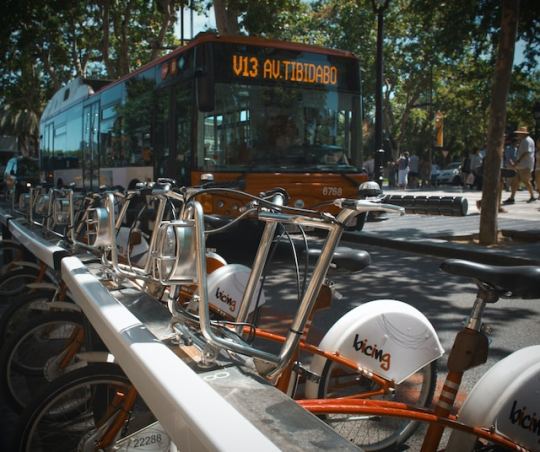
When it pertains to reducing your carbon footprint and greenhouse gas emissions, one of the very best ways to do so is by making use of mass transit. Not just does this help to reduce traffic blockage, but also assists to minimize the number of cars on the road. Here are some practical and easy actions to integrate sustainable transit practices into your day-to-day commute:
Use Mass Transit
-Benefit from buses, trains, and trains whenever possible.
-By making use of public transport, you're helping to decrease the variety of automobiles on the roadway, which can result in fewer greenhouse gas emissions.
Carpooling
-Consider carpooling with coworkers, pals, or household members to lower the number of cars on the roadway.
-This is an excellent way to minimize traffic, while also decreasing your carbon footprint.
Cycling and Strolling
-If you're not too far from your location, consider biking or walking.
-These sustainable commute alternatives not just lower your carbon footprint, but they can also benefit your health!
"Cycling and strolling not just decreases your carbon footprint however likewise assists fight climate change, as it reduces energy usage and decreases the number of vehicles on the roadway." -Andy Murdock, Transportation and Environment Program Director.
Use Sustainable Commute Tools
-Use online tools, like Google Transit or Citymapper, to help plan your sustainable commute.
-This can help you find the finest transit routes, bike paths, and walking instructions in your city.
Single-Use Plastic Alternatives

Single-use plastics are a considerable contributor to plastic waste in the environment. By making a few basic changes in your life, you can minimize your usage of single-use plastics and help make a positive impact on the environment.
1. Bring multiple-use shopping bags to the grocery store: Rather of using plastic bags that wind up in garbage dumps or oceans, bring your own recyclable bags. Not only is this an easy way to minimize your plastic use, however numerous stores and markets offer incentives for bringing your own bags.
2. Use a reusable water bottle: Plastic water bottles are a significant contributor to land fill waste. By using a multiple-use water bottle, not only will you decrease your plastic waste, however you'll also conserve cash in the long run.
3. Swap plastic straws for multiple-use ones: Americans use and throw away countless plastic straws every day, contributing to the plastic pollution crisis. Swap out plastic straws for stainless-steel, glass, or bamboo straws that are recyclable and washable.
4. Select recyclable food containers: Instead of utilizing cling wrap or non reusable containers to save your food, think about utilizing recyclable glass or silicone containers. Not only are they much better for the environment, but they also make for simpler and more efficient food storage.
Food Choices and Sustainable Consuming

One of the most effective ways to accept sustainable living practices is to make mindful choices about the food you consume. By choosing eco-friendly food choices, lowering food waste, and supporting local farmers and growers, you can considerably affect the environment and promote sustainable living.
Here are some easy and practical suggestions to assist you incorporate sustainable food options in your everyday regimen:
1. Choose Plant-Based Alternatives: Meat production has a significant impact on the environment, as it requires large amounts of water, land and energy. By reducing your meat consumption and choosing plant-based alternatives, you can reduce your carbon footprint and also have a healthier lifestyle.
2. Lower Food Waste: Did you understand that almost one-third of all food produced around the world is squandered every year? Minimizing food waste is not just great for the environment, but also for your wallet. Strategy your meals, make a grocery list, and purchase only what you need. Utilize all parts of fruits and vegetables, and store them effectively to avoid putridity. Donate excess food to regional shelters and charities.
3. Support Local Farmers: Buying regional produce not only supports the neighborhood but also promotes sustainable farming. By picking to purchase from local farmers and growers, you decrease the carbon footprint related to long-distance transport, and you get fresh and healthy food. Go to farmer's markets, community-supported agriculture (CSA) programs, and regional food co-ops to discover sustainable and locally-grown foods.
4. Select Sustainable Seafood: The oceans are an essential part of the environment and provide a source of nutrition for millions of individuals. However, overfishing and unsustainable fishing practices have placed many fish species in danger. Pick sustainably gathered seafood alternatives, look for eco-labels such as the Marine Stewardship Council (MSC) or Aquaculture Stewardship Council (ASC) and prevent seafood that is on the red list of threatened types.
5. Grow Your Own Food: Growing your own food promotes self-sufficiency and decreases your carbon footprint. Even if you don't have a large yard, you can grow herbs, veggies, and fruits in small pots and even in your cooking area. This is a terrific method to get fresh and natural produce, and likewise to get in touch with nature.
Mindful Consumption and Ethical Fashion

From food to fashion, we consume a vast array of products daily. One of the significant threats to the environment is fast fashion. Fast fashion is a term used to describe an industry that produces clothes quickly and exploits labor and environmental laws.
So, how can we minimize our ecological effect through mindful usage and ethical fashion?
1. Buy pre-owned clothing
Rather of buying brand-new clothes, explore thrift stores, yard sale, and online markets like eBay, Poshmark, or ThredUp. Purchasing pre-owned clothes is a sustainable practice that decreases waste and supports the circular economy.
2. Buy quality clothing
Purchasing quality clothing might cost more in the brief term, however it pays off in the long run. Quality clothes last longer and decrease the need for regular replacements. Try to find clothes made from natural, naturally degradable, or recycled products.
3. Lease clothing for special events
Instead of purchasing new gowns or fits for special celebrations, lease them. Renting clothes is a sustainable practice that saves money, lowers waste, and helps to keep the clothing out of land fills.
4. Consider the ethics of the brand
Take a conscious choice and think about the ethics of the brand name before buying. Research the brand name's labor practices, ecological policies, and commitment to sustainability. Select brand names that focus on ethical sourcing, fair labor, and utilize sustainable materials.
5. Support local brands
Supporting regional brand names is a terrific method to minimize the environmental impact of fashion. Regional brands often produce clothing on a smaller scale, use less energy for transport, and support the local economy.
Waste Management and Recycling
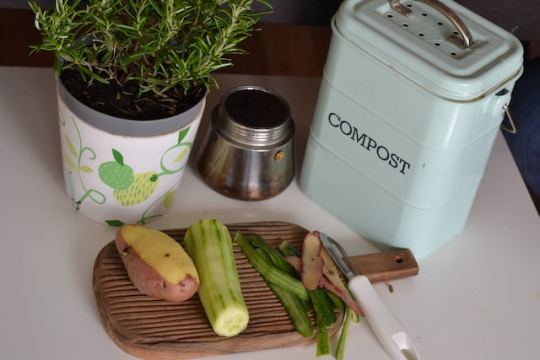
If you're looking to embrace sustainable living practices in your life, among the crucial locations to focus on is waste management and recycling. By decreasing the amount of waste you produce and recycling as much as possible, you can considerably reduce your carbon footprint and make a positive impact on the environment. Here are 10 easy steps to help you begin:
1. Establish a recycling station in your house. Designate a specific area in your cooking area or energy room to sort and store your recyclable items.
2. Purchase a yard waste bin. If your local government provides yard waste pickup, buy a designated bin so that you can compost garden waste and food scraps. This keeps raw material out of garbage dumps and can even result in nutrient-rich soil for your garden.
3. Many mainstream personal care products contain not only harsh chemicals but also packaging materials that can't be recycled. Switching to eco-friendly alternatives is not only better for your health but also for the planet.
4. Repair and fix clothing instead of throwing it away. These easy steps can significantly extend the life of your clothing and minimize fabric waste.
5. Shop with reusable bags and containers. Bring a multiple-use shopping bag with you to avoid wasting single-use bags at the supermarket. Think about utilizing refillable containers for items like bulk grains, nuts, and oils to lower unneeded packaging waste.
6. Compost your food scraps. If you do not have access to backyard waste pickup, consider starting a compost heap in your yard or utilizing a composting bin to break down food scraps.
7. Contribute undesirable items rather of throwing them away. Lots of household items can be donated to charity rather than ending up in a landfill. Clothing, furnishings, and kitchenware are just a few examples of products that can be offered a brand-new lease of life.
8. Use rechargeable batteries instead of disposable ones. Batteries contain products that can be hazardous to the environment if not disposed of appropriately. Changing to rechargeable batteries is a simple way to decrease waste.
9. Minimize junk mail. Register for services to eliminate your name from direct-mail advertising to lower the quantity of paper waste produced by scrap mail.
10. Carry out a clean-up day in your regional community. Get together with your neighbors to tidy up your parks and beaches. This not only assists the environment but also encourages community participation.
Conclusion
Integrating sustainable living practices into your daily routine doesn't have to be frustrating or tough. By implementing little modifications, such as reducing waste, picking environmentally friendly items, and utilizing alternative transport methods, you can make a huge influence on the environment and live a more environmentally friendly lifestyle. Why not start today? Select a couple of the pointers we've shared and dedicate to integrating them into your daily life. Together, we can produce a more sustainable and flourishing world for future generations. Do not forget to share this article with your pals and family to assist get the word out and inspire others to join the sustainability movement.
#Youtube#sustainable living#sustainability#green living#eco friendly#sustainable lifestyle#environmentallyfriendly#reduce#reuse#recycle#mindful living#ethical living#zero waste#sustainable choices#eco conscious#green tips#sustainablecommunity
12 notes
·
View notes
Text
What will be the future of thrifting and reuse?
Last post ( this one!! c: ) I talked about the crappy pants that my lovely mother bought me. I’m not continuing to drag on her, I love her! I’m gonna ask the question; what is going to be the future of thrifting and reuse for second hand consumers*?
* - I usually hate to call people consumers but it’s what best fits here.
If things continue to be produced as garbage from the start, what do we do? When mending, both visible and stealthy, fail because the materials just refuse to hold together, where do we go to get answers? Do we cave and purchase more crap and stop attempting to mend, or adapt?
This isn’t just finished products, it’s the materials that aren’t yet ‘products’. I don’t use tiktok every single day but when I do it’s on the algorithm’s “good day” (Iykyk). A lady who’s been sewing her own clothing for many years has pointed out that brand new cloth is becoming thinner and thinner, even the “heavy weight” material (I think she specifically mentioned cotton).
Does anybody have answers?
#recycled words#reduce reuse recycle#enshittification#clothing waste#clothing mending#clothing quality#planned obsolescence#environmentallyfriendly
2 notes
·
View notes
Text
Sustainability refers to the ability to maintain ecological, social, and economic systems over the long term, without compromising the ability of future generations to meet their needs. This requires balancing the use of natural resources with the need to protect and preserve the environment.
Sustainability is important because it allows us to create a world where humans can thrive while minimizing negative impacts on the environment. By using resources in a sustainable way, we can ensure that we are meeting our needs without depleting resources or causing harm to the planet.
At the workplace, individuals can contribute to sustainability by creating sustainable programs that reduce waste, conserve energy, and promote environmentally friendly practices. Some examples of programs that can be implemented include:
Recycling and waste reduction programs: This can include implementing a recycling program for paper, plastics, and other materials, and encouraging employees to reduce waste by using reusable containers and water bottles.
Energy conservation programs: This can include implementing energy-saving practices, such as turning off lights and computers when not in use, using energy-efficient appliances, and installing programmable thermostats.
Sustainable transportation programs: This can include encouraging employees to use public transportation, carpool, or bike to work, and providing incentives for these behaviors.
Green purchasing programs: This can include purchasing environmentally friendly products, such as those made from recycled materials, and supporting companies that prioritize sustainability.
By implementing sustainable programs in the workplace, individuals can contribute to a more sustainable future, reduce the negative impact of their organization on the environment, and create a healthier and more productive workplace.l
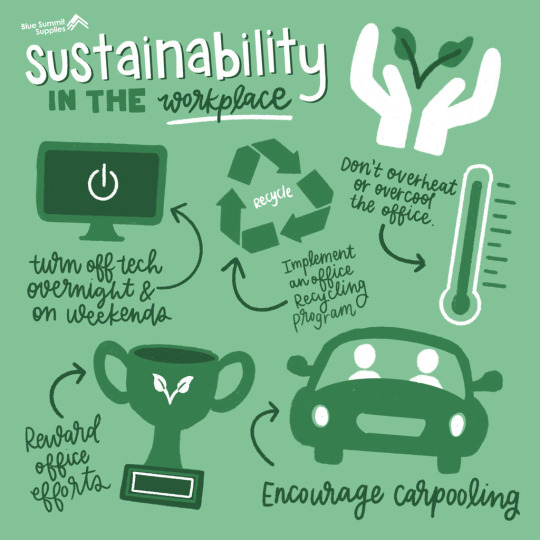
Image Source:
https://www.bluesummitsupplies.com/blogs/resources/9-office-sustainability-ideas-for-a-
#green environment#sustainability#sustainable#environmentallyconscious#environmentallyfriendly#eco friendly#changes#recycle#don't waste energy#renewablephilosopher#tips#work
8 notes
·
View notes
Text
Enlightening the Future: The Wonders of LED Lighting
In this blog post, we will delve into the captivating realm of LED lighting, examining its many advantages, diverse applications, and its pivotal role in forging a more sustainable and energy- conscious future.
The Evolution of Illumination
Before we explore the myriad advantages of LED lighting, it's important to appreciate the historical context. For many decades, incandescent bulbs dominated the lighting landscape, casting warm but highly inefficient light. These bulbs were notorious for generating excessive heat and consuming copious amounts of energy.
In the mid-20th century, fluorescent lighting emerged as a more energy-efficient alternative, but it had its share of drawbacks, including the presence of hazardous materials like mercury. However, the 21st century ushered in the era of LEDs, which addressed these issues and introduced a host of transformative benefits.
Advantages of LED Lighting
Energy Efficiency: LEDs are astoundingly energy-efficient, using up to 80% less energy than traditional incandescent bulbs. As a result, you save a lot on your electricity bill.
Longevity: LED bulbs boast an impressive lifespan, often exceeding 25,000 hours or more. This results in less waste and fewer replacements.
Durability: LEDs are solid-state lighting devices, making them more robust and resilient to shocks and vibrations compared to fragile incandescent and fluorescent bulbs.
Instant Illumination: LEDs provide instant brightness without the warm-up time associated with some other lighting technologies.
Color Variety: LEDs are available in a wide range of colors and color temperatures, facilitating creative and customized lighting solutions.
Environmental Friendliness: LEDs are environmentally responsible, emitting less heat and containing no hazardous materials. Their lower energy consumption also contributes to reduced greenhouse gas emissions.
Applications of LED Lighting
The versatility of LED lighting is reflected in its extensive range of applications, reshaping diverse industries and enhancing our everyday experiences. Here are some noteworthy uses:
Home Lighting: LED bulbs are widely used for general lighting, accent lighting, and even integrated into smart lighting systems that can be controlled remotely for convenience.
Commercial and Industrial Lighting: LEDs have become indispensable in warehouses, offices, factories, and retail spaces due to their energy efficiency and long life.
Street Lighting: Many municipalities have adopted LED streetlights to save energy and improve nighttime visibility.
Automotive Lighting: LED headlights, taillights, and interior lighting have become the standard in modern vehicles for their brightness and energy efficiency.
Entertainment and Decorative Lighting: LEDs are the go-to choice for creating captivating and dynamic lighting displays at concerts, events, and theme parks.
Healthcare and Horticulture: LEDs play a pivotal role in healthcare for surgical lighting and horticulture for controlled plant growth.
The Future of LED Lighting
The future of LED lighting holds immense promise. With advancing technology, we can anticipate even more energy-efficient, intelligent, and sustainable lighting solutions.
Smart Lighting Integration: Seamless integration with smart home systems will offer personalized lighting experiences, enhancing comfort and energy savings.
Human-Centric Lighting: LEDs will increasingly mimic natural daylight, supporting circadian rhythms and promoting overall well-being.
Li-Fi Technology: LEDs may play a significant role in Li-Fi, a technology that uses light waves for high-speed wireless communication.
Sustainable Design: LEDs will be prominently featured in sustainable architectural and interior designs, further reducing energy consumption and environmental impact.
Conclusion
LED lighting has not only illuminated our surroundings but has also brightened the path to a more energy-efficient and sustainable future. From the coziness of our homes to the brilliance of city streets, LEDs have transformed the way we see the world. As technology continues to evolve, we can eagerly anticipate innovative advancements and applications in the realm of LED lighting, all contributing to a greener and more comfortable planet for generations to come. So, embrace the brilliance of LEDs and be a part of the enlightened future of illumination!
Abhay V Shah.
CEO
Hozon Tech Innovation Private Limited
Mumbai
#LEDLighting#EnergyEfficiency#SustainableTech#GreenTech#LightingSolutions#SmartLighting#EnergySavings#EcoFriendly#GreenLiving#FutureOfLighting#LightingDesign#LEDAdvancements#CleanEnergy#EnvironmentallyFriendly#LightingTechnology#BrightIdeas#EfficientLighting#Sustainability#GreenInnovation#LEDBenefits
4 notes
·
View notes
Text

Did you know that your summer holidays at Cal Domino are now 100% Green ? Our large PV array generates excess power all through the year and is saved in a "Virtual Battery" for later use. Domestic hot water is produced by solar power and two large hot water collectors and the pool filtration system is 100% solar powered and together with the Calonge council, all household waste is collected at the front door and re-cycled. Now you can do your bit for the planet even whilst you are on holiday.
#caldomino#spain#catalunya#rentalvilla#villarental#hiking#selfcatering#walking#costabrava#environmentallyfriendly#greenholidays
2 notes
·
View notes
Text

Discover the epitome of premium packaging with Kappa Boxes. Our versatile and practical solutions are eco-friendly, offering uncompromised quality at the best prices. Let us elevate your brand with our customizable and sustainable packaging options.
#KappaBoxes#ExquisitePackaging#CustomizableSolutions#PremiumPackaging#VersatileAndPractical#EcoFriendlyPackaging#UncompromisedQuality#BestPrices#SustainableSolutions#ElevateYourBrand#CustomBoxSolutions#ElegantDesigns#GreenPackaging#InnovativeSolutions#SustainableLuxury#HighQuality#PackagingExperts#BespokeBoxes#EnvironmentallyFriendly#UnbeatableValue#BrandEnhancement#CreativePackaging#UniqueDesigns#PackagingPerfection
2 notes
·
View notes
Video
13 Eco-Friendly Tips For Organising & Deep Cleaning Your Home
Looking for eco-friendly ways to organise and deep clean your home? Check out our top 13 tips for a greener, cleaner living space! From decluttering to natural cleaning solutions, here’s how to make your home more sustainable and kinder to the environment.
https://www.soovy.club/blog/eco-friendly-tips-organising-deep-cleaning-home-sustainable
#EcoFriendlyLiving#GreenCleaning#SustainableHome#NaturalCleaning#OrganicLiving#EnvironmentallyFriendly#EcoLiving#SustainableLiving#GreenLiving#EcoCleaning#OrganicCleaning#EcoFriendlyHome#GreenHome#SustainableHomeLiving#GreenCleaningTips#EcoFriendlyTips#EcoFriendlyLifestyle#sustainablelifestyle#NaturalHomeCleaning#EcoFriendlyProducts
4 notes
·
View notes
Text

İnsan kendi Kader'inin mimarıdır...
#izoguard#izoguardmimarlık#decor#decoration#design#architecture#homedecoration#homedesign#officedecoration#officedesign#environmentallyfriendly#insulation#felt#natural
4 notes
·
View notes
Text
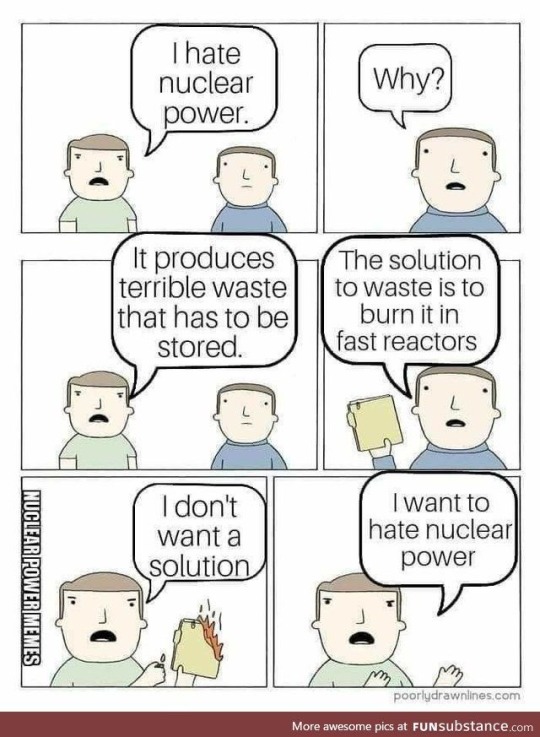
#tumblr memes#meme#memes#nuclear power#nuclear#green energy#green power#meme humor#best memes#memesdaily#environmental#environmentallyfriendly#shitpost#political memes#political humor#political shitposting#humor#humour#funny but true#funny because it's true#funny memes#true memes#funny stuff#funny#funny post#funny shit#funny content#ha ha funny#spilled truth#its the truth
62 notes
·
View notes
Text

💐🌹🌷🌻ANNOUNCEMENT🌻🌷🌹💐
Hello everyone! We are selling our group-themed flower pots for all who wanna have their very own art forest ranger! Check the flyer and check out the group's posts later for more info.
DISCLAIMER: This is part of a college project.
Flyer by: Schuyler
#aranara#aranarareporting#flowers#natureinspired#environmentallyfriendly#durable#flowerpots#springtime#spring#planting#seeds#homegrown#announcement
3 notes
·
View notes
Text



“Medea” dress by Francesco Colucci
#sustainable art#environmental art#environmentallyfriendly#conscious#art#fashion design#fashion#mask#photography#entity#surreal#surrealism#absurdism#alien#monster#italian artist#Italian art#Italy#London based#londonart#London#poetry#design#sculpture#haute couture#textile#texture#camp#reuserevolution#artist
3 notes
·
View notes
Text
Could any lovely plant ID/forager folk help me out with an ID? I’m trying to figure out what variety of Juniper this is for future reference
(Bonus points if you can spare the knowledge of if the berries are toxic; I know about the common juniper being the one for flavorings and w/e but I know this isn’t that)



(Pls be nice I’m a beginner forager ✨)
#plant#plants#plant id#forager#foraging#plant gathering#botany#botanical#juniper#juniper plant#plant id help#freegan#freeganism#low waste#low waste living#environmentallyfriendly
1 note
·
View note
Text
Calgary Transit is offering 50% off passes for the summer and I’m like 🫤 that’s cool and all. But the real question is WHY DIDN’T THEY OFFER FREE TRANSIT TO THOSE WHO WENT TO SHAWN MENDES 3 WEEKS AGO?! His tour is completely carbon/environmentally friendly and fans were ENCOURAGED to find environmentally friendly ways to get to his shows. The venues are/were supposed to be as environmentally friendly as possible too, but the Saddledome is 💩 and didn’t implement anything.
I’m just saying…if Calgary Transit was able to do it to encourage vaccinations, they could have easily done it for a concert for ONE NIGHT.
Yes, I’m also being bitter and petty at the fact that I had to spend almost $15 on transit between me and Hayden 🙄
****************************************************
Then my grandma goes and posts this gem of a comment ⬇️ I stg woman….So I come in with not only a brief description of what SAF is but a LINK to the freaking Wonder Tour sustainability program. Come at me again, and I’ll send more info your way ✌🏻
There ARE environmentally friendly fuels out there, grandma. Stop listening to FB garbage.
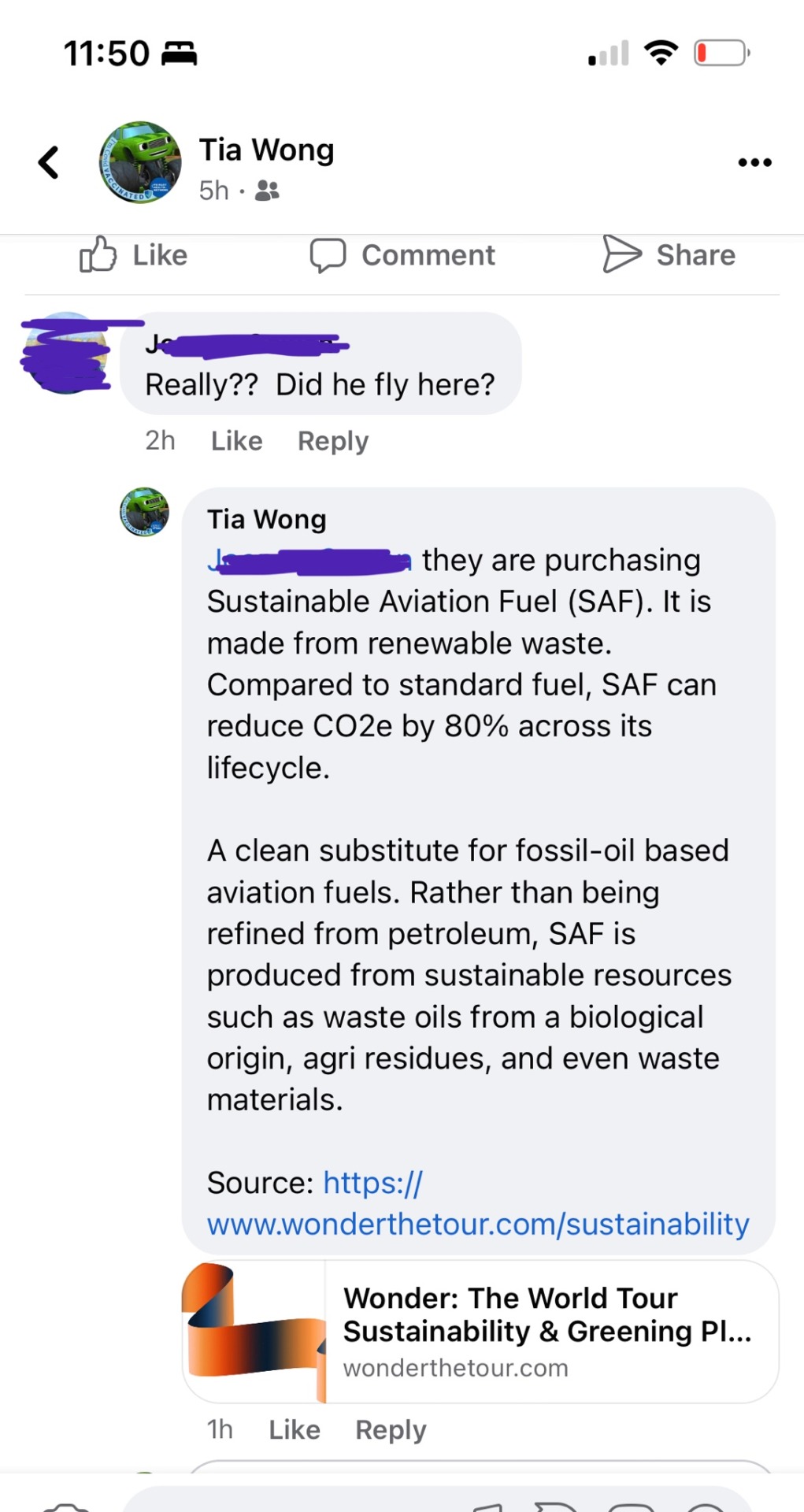
#my post#shawn mendes#wonder the tour#sustainability#environmentallyfriendly#environmentallyconscious#don’t argue with me
3 notes
·
View notes
Photo

Pure, hydrating skincare! With Earth Day just two days away, it’s great to remember that bar soap lovers are helping to reduce plastic waste in our world everyday! YAY you!!!!💪🏻🌏🌺 . . . #earthday #reduceplasticwaste #barsoap #usebarsoap #handmadesoap #vegansoap #environmentallyfriendly #reducereuserecycle #soap #soapmaker #etsysoap #etsyshop #soapshop #cpsoap #virginiamade #homemadesoap https://www.instagram.com/p/CclGAgRuzWR/?igshid=NGJjMDIxMWI=
#earthday#reduceplasticwaste#barsoap#usebarsoap#handmadesoap#vegansoap#environmentallyfriendly#reducereuserecycle#soap#soapmaker#etsysoap#etsyshop#soapshop#cpsoap#virginiamade#homemadesoap
5 notes
·
View notes